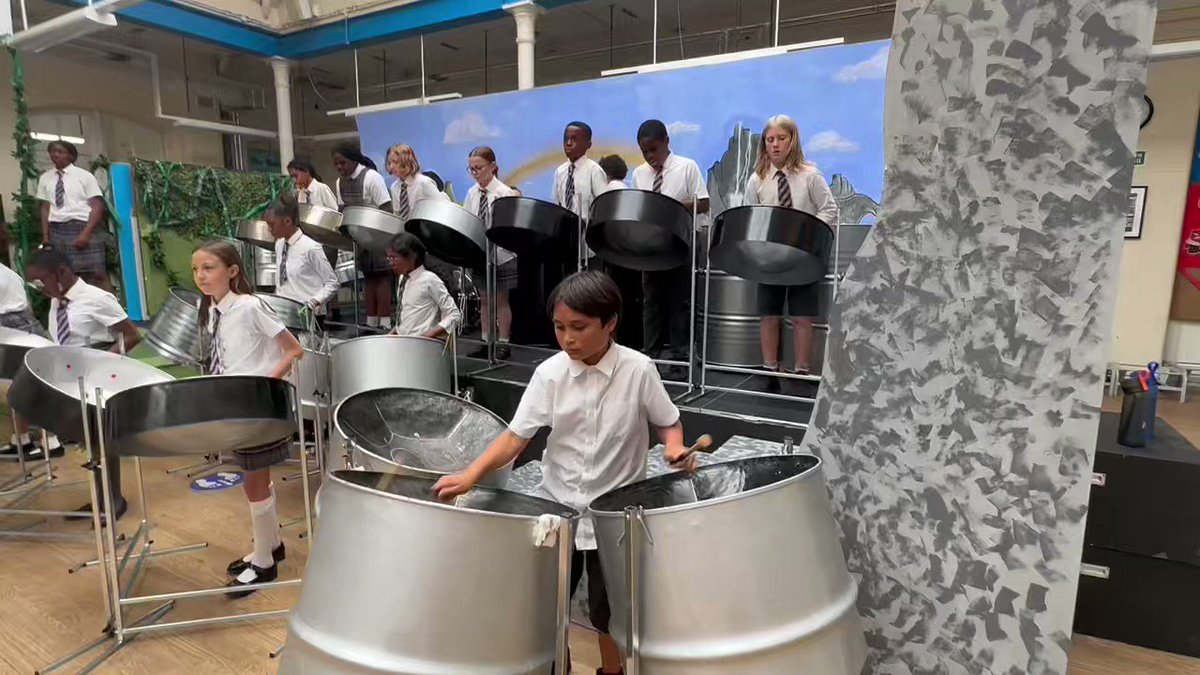
28/02/24
follow us @HPA_Philip_Lane

28/02/24
A selection of art pieces from our painting unit last half term! All of our students will have their paintings displayed at our art exhibition in May. @HarrisFed #harrisprimaryart
follow us @HPA_Philip_Lane
08/02/24
Please tell Angie we miss her immensely and that we hope she is settling in well!
follow us @HPA_Philip_Lane

24/01/24
Y1 have been taking a closer look into the different parts and tastes of apples in their DT lesson today. This is all in preparation for their fruit salads later in the term! @HarrisFed #harrisprimaryDT
follow us @HPA_Philip_Lane

18/01/24
A massive thank you to @NPGLondon for providing an amazing drawing/printing workshop for our Y5 students yesterday, they were extremely engaged throughout. @HarrisFed #ArtEnrichment #Harrisprimaryart
follow us @HPA_Philip_Lane

16/01/24
Y1 have been using a variety of different tools to see which one is best for painting within a boundary line. A great art lesson of experimenting and our students being able to reach conclusions on their own. @HarrisFed #HPAPLart #harrisprimaryart
follow us @HPA_Philip_Lane

01/12/23
Y2 have braved the cold and have been learning all about nature art at @Yourallypally today. @HarrisFed #harrisprimaryart
follow us @HPA_Philip_Lane

02/11/23
Y5 have been cooking up a storm in the DT room making some delicious chunky vegetable soup. Just what is needed as the weather is turning colder. @HarrisFed #harrisprimaryDT
follow us @HPA_Philip_Lane

05/10/23
It was ‘BERRY’ nice to meet Pudsey bear today to hear all about the great charity @BBCCiN . Some of our children got a lucky invitation to bake some delicious cupcakes with the lovely @and_fearne jam company, they were scrumptious! @HarrisFed
follow us @HPA_Philip_Lane

04/10/23
Our Y6 artists have been taking their observational skills to the next level and started on their 1:1 scale drawings of their school bags. We will share the outcomes with you next week! @harrisfed #harrisprimaryart
follow us @HPA_Philip_Lane

04/10/23
Our reception artists enjoyed a ‘Kandinsky’ art lesson of letting the music guide their lines and shapes on their paper. Lots of eyes closed so they could fully be immersed in the experience. @HarrisFed #harrisprimaryart
follow us @HPA_Philip_Lane

26/09/23
Y2 have been working on the visual element of line this half term and worked collaboratively to create owl feathers using different media. @HarrisFed #Harrisprimaryart
follow us @HPA_Philip_Lane

22/09/23
Our Y6 students, as part of their DT lesson, went on a walk this afternoon to find a variety of freshly baked bread within our local community. We found Turkish Pide, sourdough, Jamaican sweet bread, Jamaican fruit bun and a delicious three cheese Colombian loaf! @HarrisFed
follow us @HPA_Philip_Lane

06/09/23
Our new reception children had their first art lesson with Ms Tarr where they were learning all about the visual element line. Their skills were put to the test when designing hairstyle for their new teachers. They look fabulous!! @HarrisFed #Harrisprimaryart
follow us @HPA_Philip_Lane

28/07/23
A trip to the park today for our holiday WRAPZters, they are a wild bunch! @HarrisFed #HolidayWRAPZ
follow us @HPA_Philip_Lane

26/07/23
Day 3 at holiday WRAPZ and still so much to do!! @HarrisFed #holidaywrapz
follow us @HPA_Philip_Lane

25/07/23
A HUGE thank you to Friends of Philip Lane (FOPL) who have kindly brought some much needed games for WRAPZ holiday club. They have been thoroughly enjoyed! @HarrisFed
follow us @HPA_Philip_Lane

19/07/23
Year 6 had a wonderful time at Walthamstow Wetlands, walking, bird-spotting, sketching and enjoying the peace and tranquility of nature.
follow us @HPA_Philip_Lane

19/07/23
What an AMAZING concert we had today showcasing the incredible steel pans for our year groups 3-6! Here is a little snippet from HPAPL steel pan club.
follow us @HPA_Philip_Lane

17/07/23
Chessington 2023 is over! We're on our way back to school after an outstanding day of excitement.
follow us @HPA_Philip_Lane


